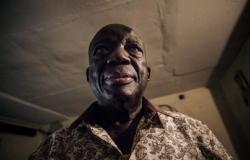the essential
This Ruthenian woman is notably at the origin of Mgr Saliège’s letter in 1942, “Letter on the human person”, which speaks out against the decisions of the Vichy regime.
Thérèse Dauty comes out of the shadows. And that’s good. Because it is at the origin of one of the major facts of the Resistance. A fact which was also celebrated with great fanfare in 2022 to commemorate its 80th anniversary: the letter from Mgr Saliège. A text called “Letter on the human person” that the then archbishop of Toulouse, whose bust sits enthroned in the pink city, sent to the priests of the diocese to be read on Sunday August 23, 1942. It is the first public denunciation of the Church against the racial policy of Vichy. And this letter was inspired by a Ruthenian woman: Thérèse Dauty.
“She raised awareness”
She was 23 years old when she took part in Catholic Action for the Strange after being dismissed from National Education for “anti-national activities”. As such, this fervent Catholic discovered the horror of the conditions of detention and deportation at the Récébédou camp in Portet-sur-Garonne and Noé. She shared it with Mgr Saliège with these words: “They were women of all ages. Under a scorching sun, they were walking from Camp du Récébédou to the station, where the freight wagons were waiting for them. The oldest tried not to walk too slowly and to hide their tears. Others, younger, expressed their fear of being separated from a mother, a relative, old or sick. And they added like the unfortunate “refugees” of Noah. Who will defend us? Who will speak for us? “This is the story that I told Mgr Saliège.”
From there, with three other women including two nuns, the Saliège network was born, which will make it possible to shelter children near Capdenac. Thérèse Dauty is determined to carry out her resistance action to the end.
“An honored city”
“It has raised awareness and we should rejoice!”, exclaimed Bishop Mgr Meyer, invited this Friday to the ceremony which saw the name of the new square created in the Bourran district, near rue Boscary-Monsservin, bear his name. And it is with an ounce of pride that Mayor Christian Teyssèdre unveiled this plaque. “The city can be honored to have had a person like her who helped the Jewish community”launched the mayor, during a ceremony in which Georges Plainecassagne notably participated. “Not very long ago, I was touched by his story. A little-known story”, he explained. He suggested the idea of naming a street or a square after this Ruthenian resistance fighter to municipal councilor François Vidamment.
During this ceremony, her niece, François Dauty, with a portrait of her aunt in her hands, was also able to express her pride. “She was a patient and reserved woman but who knew how to speak very loudly when necessary. She remained very attached to Rodez and Aveyron all her life.” Thérèse Dauty, who was able to return to her position as a history teacher, also served on the city’s municipal council and was part of the Society of Letters. She died in 1967 at the age of 58. “She also really loved trees and nature, and giving her the name of a square is very fitting”, she smiled. Jeanne Dauty, of a slightly more distant relation, was also able to tell how Thérèse Dauty was a personality apart. And fully deserves to come out of the shadows.
With the unveiling of this plaque, a series of naming of streets, squares and squares ends which pay homage to Thérèse Dauty, but also Vincent Galeote, Jean Fabre, Bernard Saules, Jeanne Agar, Robert Taussat and Roger Bourrat.






